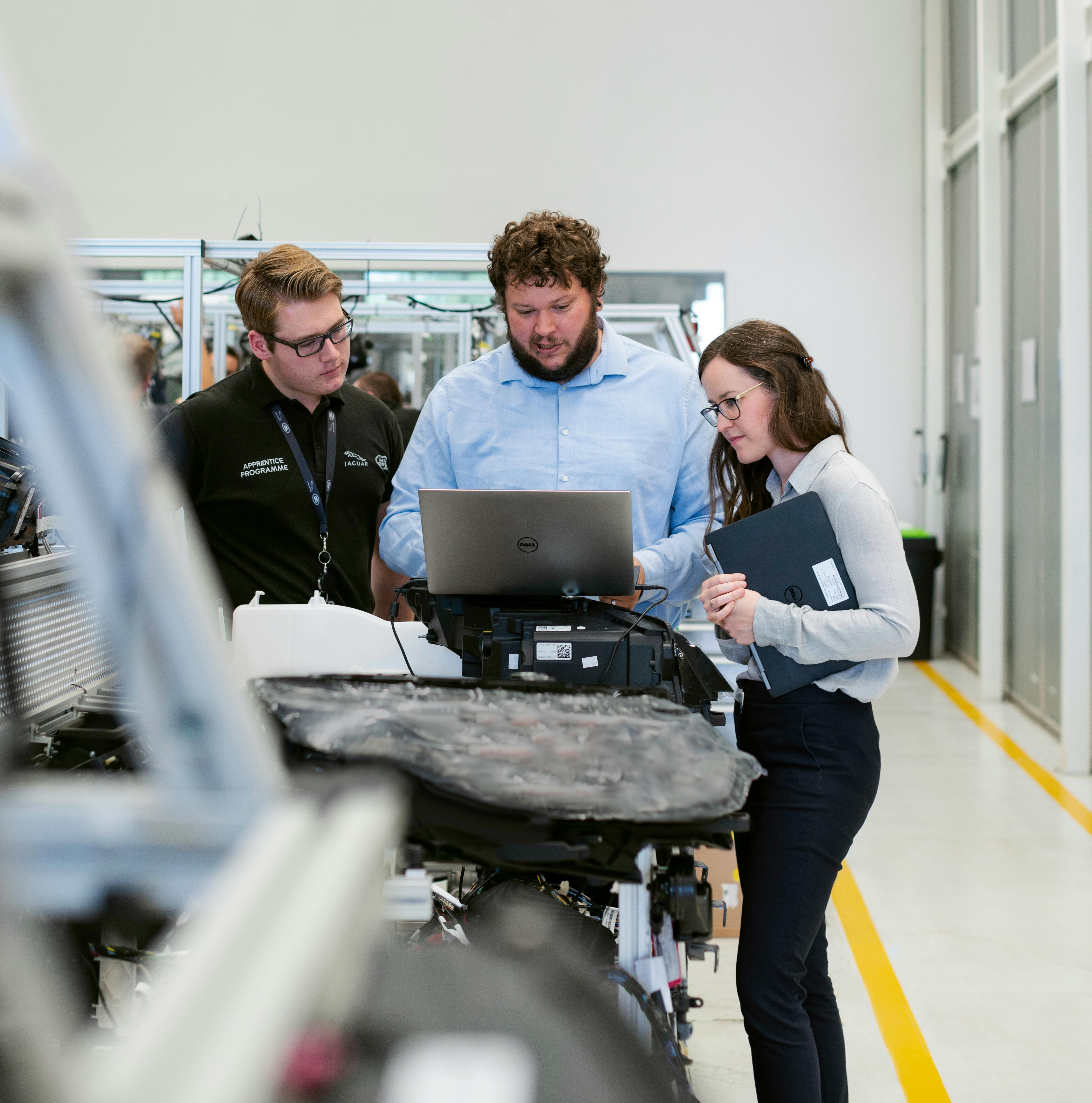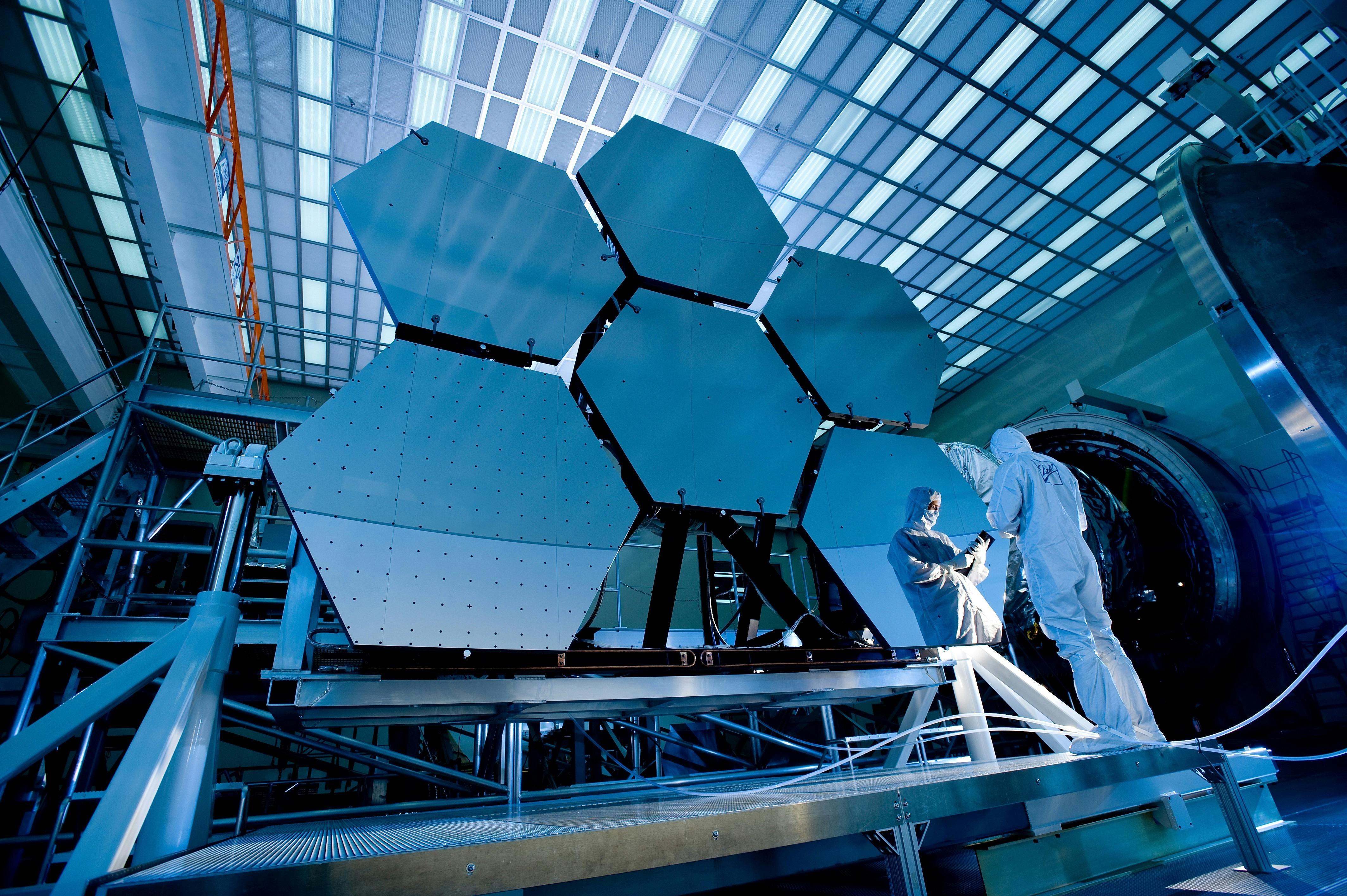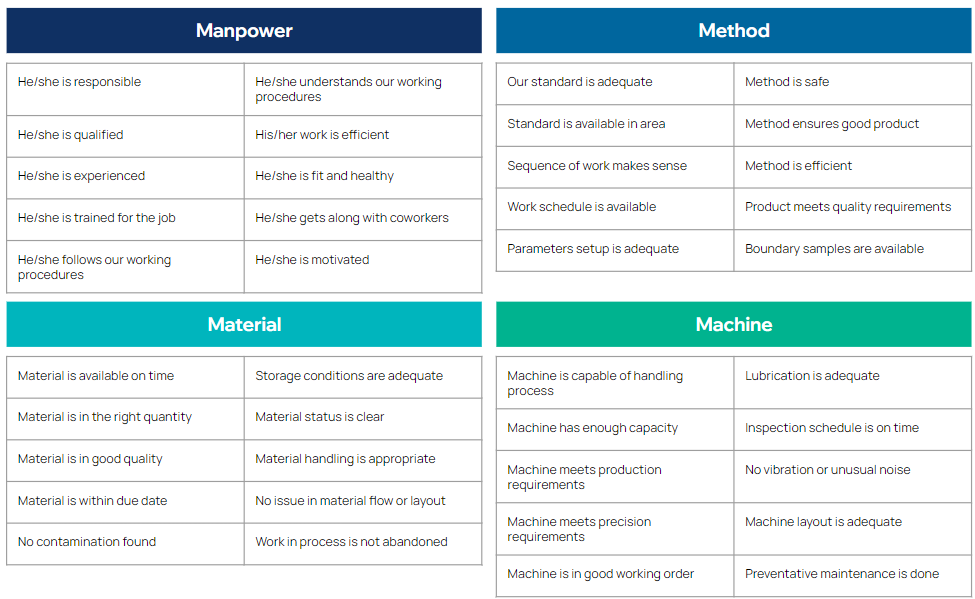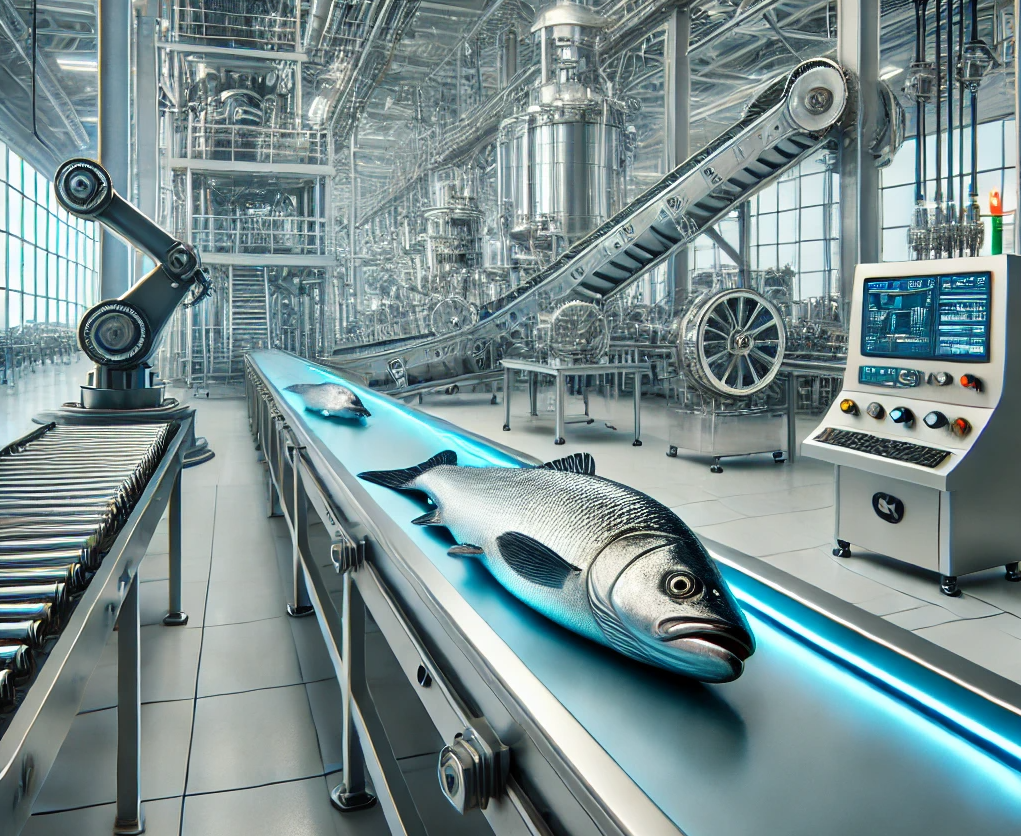

Insights
Mfg 2024.10.09
How Continuous Improvement Helps Manufacturers Solve Staffing Challenges
America is facing a labor crisis, with an imminent shortage of up to 6 million workers. Manufacturing is particularly hard-hit.
The skilled industrial workforce is getting older. Younger generations are pursuing careers in service industries. Immigrants can backfill that gap to some degree, but require careful, time-intensive training. And once a worker is trained, they’re immediately vulnerable to being poached by a competitor.
Smart manufacturers are adapting. One of the best ways to alleviate staffing issues is to adopt Continuous Improvement (CI) processes and technology.
CI helps build factories with better visibility, culture, and process. All of which help you get the most out of the employees you have, and train the new ones that come in.
Better visibility
Continuous Improvement starts with being able to see what’s happening on your factory floor (That’s why Glassdome offers real-time visibility in our platform). Seeing a problem is the first step to fixing it.
One client example is in a confectionary factory. Our client’s quality control process involved a person responsible for randomly selecting chocolate cakes, measuring their dimensions with calipers, writing them down on a clipboard, and reporting the numbers back.
This employee didn’t directly contribute to increasing production, and if there was an out-of-tolerance cake, it would take hours (and hundreds of potentially poor quality cakes rolling through the line) before it was noticed and the fault was fixed.
Glassdome worked with the client to replace the calipers and clipboard with an automated system. Quality metrics improved, and the worker was assigned to a line that needed more manpower, solving two issues in one fix.
Another benefit of process visibility is enabling smart preventative maintenance. You can keep your process humming with a leaner staff with the ability to see small shifts in machine performance and codifying maintenance schedules and results.
Fixing broken machines and dealing with fire drills takes more staff, on uneven hours, and adds hours and hours of downtime. Who needs that headache?
Process insight
CI demands a good map of your process, much the same way it works better with real-time machine and quality visibility.
Visualizing and managing your processes helps you perfect your workflow, minimizing downtime and movement around the factory, and making sure the staff you have are directly impacting production at all times, instead of moving things around or waiting for other workers to finish their components.
Related methodologies like lean manufacturing and Kanban can help a lot in this effort.
Documenting and codifying processes also makes training a new employee easier. You can even use your data to bolster their training with AI.
It also means that one knowledgeable person leaving is less likely to cripple a department or process. Their knowledge is written down and ready for the next person to pick up and use.
Collaborative culture
CI is at its core a focus on incremental updates. Each day, every process can get optimized and streamlined. Instead of your staff waiting around for the next top-down revolution, they’re incentivized to find small ways to enhance their performance.
The emphasis on bottom-up improvement isn’t just about the day-to-day upgrades (although they certainly help).
Feeling valuable and heard keeps staff motivated and engaged, reducing turnover. Delivering real, positive results, and being appropriately noticed and rewarded, fosters positive encouragement and open communication.
What next?
Staffing issues starting to bite hard? Or just trying to future-proof your factory? Glassdome can help.
Our Continuous Improvement platform has the real-time data visibility and customizable dashboards and reporting you’ll need to implement a durable, useful CI program. (And you can use it in combination with our Product Carbon Footprint solution to get greener while you get more efficient).
Get in touch today to learn more.

Mfg 2024.09.25
Why Operational Efficiency and Sustainability Aren’t Competing Interests
Making more money and making the world a better place are often framed as a tradeoff.
But a better way to think about it is that production issues and carbon emissions are just different ways to measure inefficiency. When you work towards solving one metric, the other usually improves.
That’s why we offer Continuous Improvement and Product Carbon Footprint (PCF) solutions. Because they naturally work in sync.
Better performance uses less energy
Put simply, better performance leads to less waste. Less waste means each finished product takes less energy to produce.
Our Continuous Improvement software is usually used to improve three key metrics: better quality, less downtime, and faster problem solving.
Improved quality means less out-of-tolerance product is produced. When an out-of-tolerance end product is thrown out, the carbon price of its inputs is spread out through your good products, increasing their carbon footprint. When more of your inputs are going into products you can actually sell, the lower each of their individual PCFs will be.
Less downtime means your factory runs more efficiently. All that time your line is down, you’re still keeping the lights on and running other machines. Energy is a major component of a PCF. When your line runs efficiently, your energy input per product drops.
Faster problem solving can affect your PCF in a few ways. A shorter feedback loop means an issue on a line can be fixed before it has cranked out hundreds of poor quality products. Visibility into temperature fluctuations means you can quickly mend a loose oven cover - improving quality and reducing wasted energy. Shift-to-shift variation can be identified and rectified, with similarly green results.
This all also works in reverse. Each of these examples could be a key recommendation that emerges from a Product Carbon Footprint consulting engagement.
Same datasets, different calculations
The beautiful thing about the overlap between operational efficiency and sustainability is that they use very similar datasets.
Throughput, availability, and quality are the cornerstones of OEE, and they all impact the energy used to make a product.
PCF’s laser focus on the inputs you use to make your product can be used as a forcing mechanism to find ways to decrease their amount and their cost.
Once you have a functioning data pipeline from your factory floor to your manufacturing operations platform, the possibilities for what you can improve begin to look endless.
What’s this mean for me?
You can use sustainability goals to drive operational efficiency. Or vice versa.
And the overlap in datasets means if you have one data acquisition solution that can do both kinds of calculations, you’re in great shape.
Most customers come to us with a pressing need for either an operational or sustainability solution. But the symbiotic relationship between the two means it's easy to apply the other solution to the same factory or product.
So why not handle both at the same time? Get carbon compliant and a lot more efficient, all at the same time. Set up a time to chat with one of our experts and we can see if it can work for your unique process.

Mfg 2024.09.23
How the 4M Method Can Improve Your Manufacturing Operations
Trying to find the root cause of production issues can be overwhelming. Modern manufacturing is a complex mechanism made up of elements that unpredictably impact each other.
Many leading operations managers use the 4M Method to organize their challenges into discrete, solvable pieces. In doing so, they make prioritizing and solving those problems much simpler.
The 4M Method can also make implementing lean manufacturing concepts like Continuous Improvement much easier and more effective.
Ready to learn more, and find out what’s up with the fish in the image? Let’s dive in.
Origins of the 4M Method
The 4M Method, much like Continuous Improvement, has its roots in Japanese manufacturing and organization theory.
Kaoru Ishikawa was a professor at Tokyo University who translated and taught the concepts of American management theorists like W. Edwards Deming (a founder of Continuous Improvement thinking) and Joseph Juran.
Ishikawa wanted to determine how to apply continuous improvement to processes when all variables are known. The result was the fishbone diagram (initially composed of 6Ms) shown below, out of which the 4M Method emerged.

What is the 4M Method?
The 4M Method is a way to identify and group the causes of a specific problem or effect in a manufacturing process. The four factors most manufacturers use are Manpower, Method, Material, and Machine.
Manpower
This M is about all things people - skills, operations, and resources. Common issues grouped under Man include: Lack of skills, missing qualifications, inadequate training, poor habits and behavior, and lack of motivation.
To apply the Manpower factor (yes, it sounds like a deodorant brand) to current performance, companies should:
- Organize training opportunities to improve employees’ qualifications and skills.
- Define the capabilities of each employee, identify their strengths and weaknesses, and ensure they are in the best position to succeed
To apply the Manpower factor to the future, companies should:
- Rigorously define job goals and performance indicators
- Invest in recruiting the best team members in both ability and attitude, whether through pay or other benefits
The ultimate question we need to answer is: Do my employees have the skill and the will to do what is expected of them safely, consistently and effectively?
Method
Method means the way you do things - processes, schedules, and procedures. Common issues grouped under Method include: Inadequate procedures, instructions, specifications, or responsibilities, incorrect process definitions, or not applying best production practices
To apply the Method factor to current performance, companies should:
- Create a clear production strategy with public goals and metrics, and identify tasks that will help achieve those goals
- Make sure each employee and department has tasks that match their skills and goals
- Use a software solution for visibility, analysis, and informed decision making
To apply the Method factor to the future, companies should:
- Review the percentage of errors (whether that is reflected in quality or production amount) when they apply their methods
- Ensure their security is top-notch
- Build charts and dashboard to track progress (Glassdome’s CI solution is great at creating custom dashboards)
- Review instructions for machine operation, and place them where employees can easily review them
The ultimate question we need to answer is: Do I have the processes in place to produce my products consistently and safely?
One real life example: A Glassdome confectionary client measured quality by pulling snacks off of the conveyor belt by hand, measuring them with calipers, writing down the information, and handing the completed sheet to operations staff at the end of the day.
If there was a machine fault, hundreds of out-of-tolerance snacks could be produced before the problem was spotted and fixed.
By installing the Glassdome CI solution and automating the method with real-time data collection, the quality issues were dramatically reduced.
Once the Glassdome CI solution was installed, the quality control measurer was reassigned to manage machines.
In this case, a Method fix helped resolve Machine faults quickly, and optimized Manpower. The 4Ms are all interconnected.
Material
Material means the inputs in your process - information, raw materials and consumables. Common issues grouped under Material include: Poor quality of raw materials, defective components from suppliers, poor storage conditions, sourcing delays or excess
To apply the Material factor to current performance, companies should:
- Rigorously review exactly how many materials they need in their production process
- Check how materials and inventories are handled
- Invest in technology that allows real-time review on quantities and conditions in warehouses
To apply the Material factor to the future, companies should:
- Create or automate a process to check incoming material quality
- Apply just-in-time manufacturing concepts to reduce the amount of raw materials and finished products that need to be stored for long periods of time
- Develop a supplier management system to consistently re-evaluate the caliber of your suppliers
The ultimate question we need to answer is: Do my materials meet my needs? Are there no defects or shortages? Are they being handled or moved too much? Are they stored in the right conditions?
Machine
Machine is simple. It means the equipment you use to make your products. Common issues grouped under Machine include: Inadequate care, cleaning, and inspection, inadequate or aging machines, or poor installation
To apply the Machine factor to current performance, companies should:
- Create a comprehensive maintenance plan that works with your production schedule
- Implement software that helps you see and solve issues with machine maintenance and help you predict over- or under-use of your machines
- Invest in modern machinery. It’s expensive, but just like trading in a creaky lemon for a new car it can be worth it over the long run
To apply the Machine factor to the future, companies should:
- Review their maintenance schedules and results
- Review how machines are arranged on the floor and how and when they’re used for maximum efficiency
- Check that employees are properly assigned to machines based on their skills, and how many operators the machine needs
The ultimate question we need to answer is: Are my machines capable of sale and reliable output at the quality and rate I want? Are breakdowns, defects, or unplanned downtime getting in the way of that goal?
How can I use the 4M Method? And how can Glassdome help?
By prioritizing your issues through the 4M method, you can turn an ominous cloud of problems into a structured plan full of solutions. Making continuous improvement a lot more manageable.
Continuous Improvement is all about making big improvements over time through frequent small wins. It’s a natural fit with the 4M Method’s emphasis on prioritization and visibility.
It can start with a simple checklist like the one below.

Both methodologies only work to their highest potential if you can see and analyze what’s actually happening on your factory floor. That’s where Glassdome’s real-data-based Continuous Improvement solution comes in. By seeing real machine, shift, and production data in real time, you can make informed decisions that lead to big improvements.
You’ll cut downtime, increase quality, and solve problems faster.
Sound appealing? Get in touch with one of Glassdome’s manufacturing experts to learn more.

Subscribe
Enter your email address to subscribe to the Glassdome Sustainable Manufacturing Blog
This site is protected by reCAPTCHA and the Google
Privacy Policy and
Terms of Service apply.






